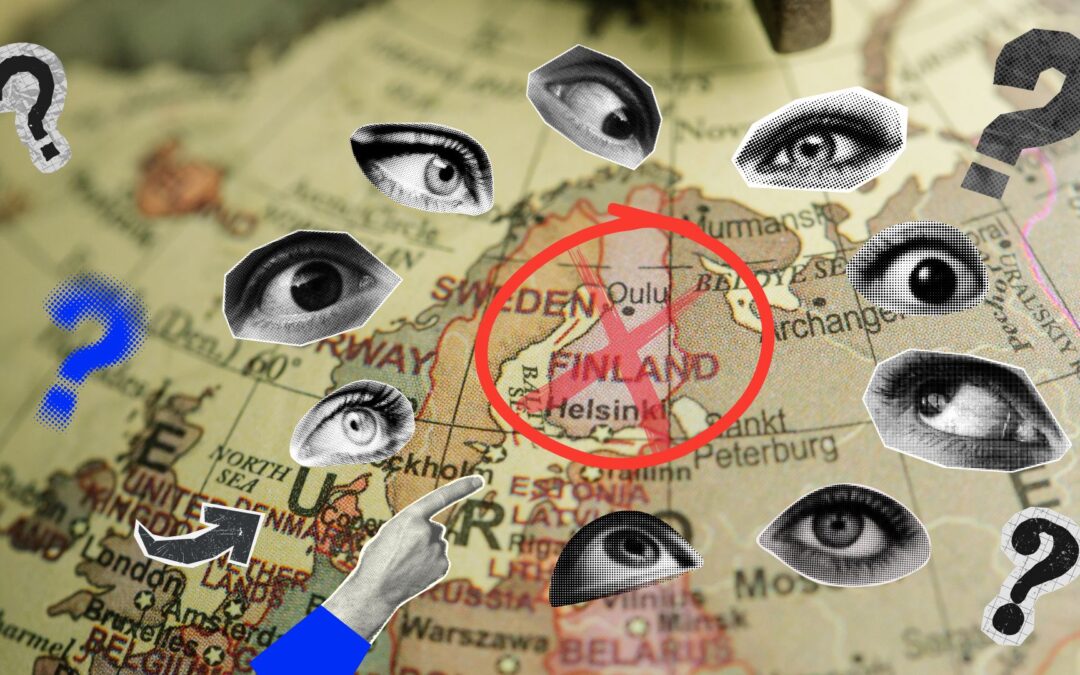“When I consider my reflection in the mirror, I am sure that it represents who I am, but what if somebody else is looking at the same thing and thinking the same?”
Francis Brunelle
Francois Brunelle is a Canadian photographer based in Montreal, and has been working on a captivating project centred around doppelgangers for 26 years, named ‘I’m Not A Look-Alike!’
Strap yourselves in for a crazy one today folks, as we’re discussing a phenomenon that will definitely leave you feeling MindFckd! If you haven’t already heard of doppelgangers – get to know.
A doppelganger is an expression used to describe an exact look-alike of a living human, stemming from German origin where ‘doppel’ means double, and ‘ganger’ means walker. Essentially, they are people you aren’t related to but hold striking similarities to. According to various studies, it’s said that everyone has around 6-7 doppelgangers dotted around the world, but it’s very rare to be fortunate enough to spot your own doppelganger going about your everyday business.
With a global population of over eight billion people, what are the chances you’d come face to face with yours?
“I always see look-alikes all over the place”, says Francois.
“They always have something in common, but are different each time, like two people taken at random. Although some coincidences are amazing.
“It challenges the notion of identity, because if someone looks like me a lot, then are we the same? Am I one out of a series?”
Francois’ intimate project, ‘I’m Not A Look-Alike’, was founded in 1999, and depicts unrelated individuals who bear striking resemblance to each other. So far, over 250 pairs of look-alikes have met up and been photographed. “They are usually surprised for a very little bit of time. Since they look pretty much the same, they become friendly instantly.”

Shot in black and white, the images featured in I’m Not A Look Alike! focus on the individual’s facial features, expression and similarities, highlighting a fascinating case of human resemblance in each shot. Our human brains are designed to recognise patterns, explaining why we may find these pictures so captivating, however, it’s understandable why studying these images may trigger existential concerns of identity and self-perception.
If someone mirrors your appearance, how unique are you, and what exactly is it that makes you, you?
A Cell Reports study published in August 2022 aimed to explore whether the phenomenon of doppelgangers was a mere coincidence, or instead rooted in shared genetic similarities. Led by Dr Manel Esteller, a geneticist who leads Spain’s Josep Carreras Leukemia Research Institute, a team of researchers teamed up with Francois to investigate this. They recruited 32 pairs of look-alikes from Francois’ project, and used facial recognition software, alongside lifestyle questions and DNA samples to gather data.
The findings were astounding.
Nine out of sixteen of the pairs shared multiple common genetic variations, known as single nucleotide polymorphisms, meaning the pairs are essentially virtual twins. They also discovered that doppelgangers were more likely than non-doppelgangers to share common characteristics like height, weight and education levels, suggesting that shared genetics may influence further correlations than just appearance. But despite this, the look-alikes had very different microbiomes and epigenomes, indicating that DNA is the primary factor that contributes to similarities.
Francois says: “I am personally fascinated, but I never expected such an interest in the phenomenon and in my project from so many people.”

However, doppelgangers weren’t always so well received to see each other. In European folklore, seeing your doppelganger was meant to be a chilling omen that signified death was near.
These speculations were reinforced in Germanic traditions, where seeing your doppelganger meant there was a disruption in the natural order, and equivalent to seeing your own ghost or ‘phantom double’. Premonitions like this were deeply rooted in the 18th and 19th century, where science and supernaturalism were still deeply intertwined.
This period of time signifies the belief that identity was truly unique and singular, and interacting with anything that challenged your sense of self was seen as a collapse of this sacred uniqueness – a concept which can still be seen today.
We live in an age of endless possibilities, where the doppelganger has made its way from folklore into the lab. But in a world of billions, who’s to say we aren’t one of many?
“People are the same, everywhere”, says Francois. “You just have to scratch beneath the surface.”



